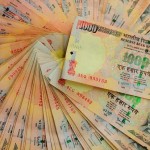The US dollar snapped three days of losses against the Swedish krona, after official data revealed annual consumer prices in Sweden declined for a third straight month in March, adding to concerns over deflation.
USD/SEK hit a session high at 6.5421 at 07:34 GMT, after which the pair consolidated at 6.5284, adding 0.7% for the day. Support was likely to be found at April 9th low, 6.4679, while resistance was to be met at April 7th high, 6.5580.
Demand for the Swedish krona was pressured after official data showed consumer prices were flat in March, confounding analysts expectations of a 0.3% increase and after prices gained 0.4% in the previous month. On year-over-year basis, consume prices plunged 0.6% in March for a third straight month, compared to projections of a 0.3% drop and after a 0.2 decline in February.
The Sveriges Riksbank left its repo rate unchanged at 0.75% at its policy meeting yesterday, but signaled a greater probability of easing monetary policy to counter the threat of deflation. The benchmark rate has been at this level since the bank meeting on December 18th 2013. The repo rate represents the rate at which banks can borrow or deposit funds at the Riksbank for a period of seven days. Short-term interest rates are of utmost importance for the valuation of national currencies.
The central bank projected a repo rate of 0.66% in the third quarter, 0.65% in the fourth quarter and 0.73% at the beginning of 2015.
“It’s considered appropriate to wait until inflation picks up before beginning to raise the repo rate,” the bank said in a statement, cited by Bloomberg. “The repo-rate path has been adjusted down somewhat and reflects a greater probability of a repo-rate cut in the near term compared with the assessment made in February.”
Riksbank cut the repo rate at its previous meeting in December to prevent deflation from taking hold as price growth has been below its 2 percent target for more than two years now.
However, the Swedish government raised its GDP growth forecast for this year, as the growth in the biggest Scandinavian economy is lifted by a global recovery.
The Swedish Ministry of Finance published yesterday its forecasts, saying the nation’s economy will expand 2.7% this year and 3.3% next year, up from 2.5% and 3.5% estimated in February. Sweden’s economy expanded 1.5% in 2013.
The Swedish economy relies mostly on exports, which account for almost 50% of its $560 billion output, and the country outperformed most of the European countries by reducing taxes to spur demand amid a slump in exports.
However, Prime Minister Fredrik Reinfeldt said that the government will put plans for more tax reductions on hold as he sees no more room for cuts over the next four years, after cutting income taxes five times since 2006.
Meanwhile, the number of people in the United States, who filed for unemployment assistance for the first time during the week ended on April 5th, probably decreased to 320 000 from 326 000 in the prior week. This is a short-term indicator, reflecting lay-offs in the country. In case the number of initial jobless claims fell more than projected, this would have a bullish effect on the greenback. The Department of Labor is to release the weekly report at 12:30 GMT.
Greenback’s demand was pressured after the minutes from the March 18-19 Fed policy meeting, at which bond-buying was trimmed for a third time, revealed that some bank’s policy makers said that projections for an interest-rate increase might be overstated.
Federal Reserve Chair Janet Yellen said last month the central bank’s bond-buying program may be brought to an end this fall, suggesting borrowing costs may start rising by mid-2015.
The Federal Reserve trimmed its monthly bond-buying program by $10 billion at the last three meetings, leaving bond purchases at $55 billion per month, while maintaining its target for overnight lending between banks in a range of zero to 0.25% for six years now.





